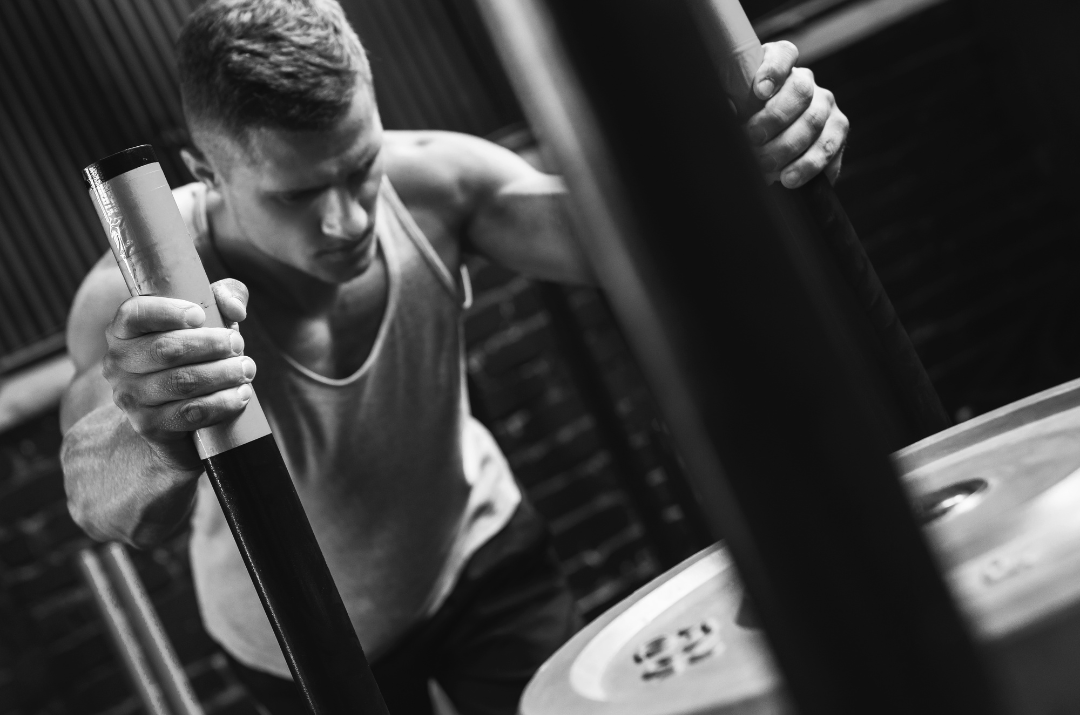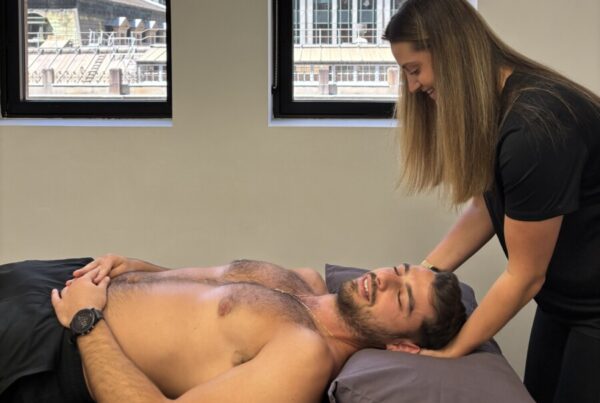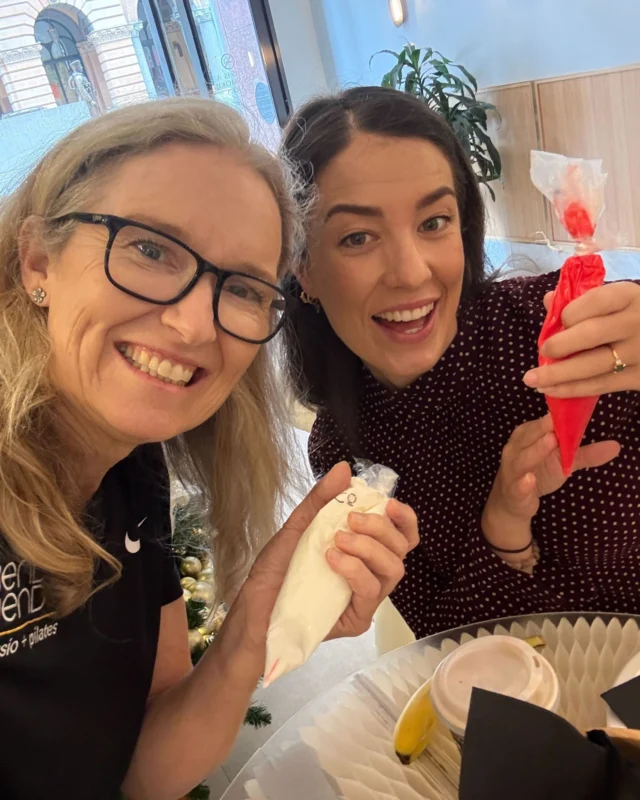Hamstring Muscle Injuries
Hamstring Muscle Anatomy
The hamstring group consists of four powerful muscles located at the back of the thigh:
- Biceps femoris (long head & short head)
- Semitendinosus
- Semimembranosus
Key Anatomical Features
- Origins:
- All originate from the ischial tuberosity (except the short head of biceps femoris, which starts at the femur).
- Insertions:
- Biceps femoris → fibular head and lateral tibia
- Semitendinosus & semimembranosus → medial tibial condyle
- Semitendinosus also contributes to the pes anserinus.
- Depth & Positioning:
- Semitendinosus lies more superficial
- Semimembranosus is deeper and sits more lateral and superior
Nervous System Supply
- Tibial nerve (L2–L5): innervates all bi-articular hamstring muscles (all but bicep femoris short head)
- Common peroneal nerve (L5–S2): supplies the short head of biceps femoris
Functional Role
The hamstrings assist in:
- Hip extension (especially during sprinting)
- Knee flexion
- Tibial internal rotation
Their dual role in hip and knee function (bi-articular nature) makes them highly susceptible to injury.
Why Are Hamstrings So Injury-Prone?
Three of the four hamstring muscles cross both the hip and knee joints, making them vulnerable during high-velocity activities. Add their composition — mostly fast-twitch fibers (Type II) — and you’ve got a recipe for overload and strain.
Injury Facts:
- Biceps femoris long head accounts for ~80% of hamstring strains (even higher percentage excluding stretch hamstring strains which are often the semimembranosus.
- Asymmetry in muscle bulk between legs can affect performance and increase risk.
- Hamstring injuries are common across sports:
- ~51% of dancers
- 33–37% of soccer and track athletes
When Do Hamstring Strains Happen?
Most hamstring strains occur during eccentric loading at maximum length, such as:
- Swing phase of sprinting (just before or after foot contact)
- Explosive actions like jumping or kicking
But also, in overstretch scenarios (e.g., splits in dance), which often involve the semimembranosus
Top 3 Causes of Posterior Thigh Pain:
- Muscle strain
- Contusion
- Referred pain from the lumbar spine or glutes
Diagnosing Hamstring Injuries: Practical Clinical Tools
Local Tissue Tests:
- “Take Off Your Shoe” Test: Pressing down with the injured leg’s heel causes pain = local tissue damage
- Palpation: Identifies the site of tenderness and implies local tissue damage
- 90/90 Bridge Test: Assesses pain and muscle activation
- ROM & Strength Tests: Pain with decreased range or force suggests strain
Neural Involvement:
Not all posterior thigh pain originates in the hamstring. Rule out nerve and lumbar spine involvement:
- Slump Test & Passive Straight Leg Raise Test: Indicates spinal or neural referral
Lumbar Spine Involvement:
- Lumbar spine Active ROM, Passive ROM & Palpation
When Should You Use Imaging?
MRI is the gold standard for confirming hamstring tears, but:
- Often unnecessary unless the injury involves tendon.
- Doesn’t typically affect the rehab plan.
- If MRI is negative, it’s usually referred pain — expect faster return to sport (often <2 weeks).
Treatment- Management, Rehab Exercises and Progressions
Phase 1: Acute (0–7 Days)
Goals: Control bleeding, inflammation, and prevent further damage
Treatment:
- RICE (rest, ice, compression, elevation)
- Crutches if painful to walk
- Isometrics after 48 hours
- Gentle massage
Phase 2: Closed Chain (High Control)
- Static bridges
- Single-leg bridges
- Bridge walkouts
- Integrated quad activation to ease hamstring tension
- Position-based isometrics (crook lying, long lever, etc.)
Phase 3:
Open Chain Progression
- Knee Flexion: Prone/seated hamstring curls
- Hip Extension: Donkey kicks, “tantrum” kicks
Closed Chain Knee Bias
- Nordic hamstring curls (eccentric overload)
Closed Chain Hip Bias
- Single-leg RDLs
- Glute-focused back extensions
- Variations of shoulder bridges
Phase 4:
Advanced Sport-Specific Training
- Eccentric-to-concentric movements and demands on the hamstrings in the particular sport are replicated
- Explosive drills (e.g., bounding, sprint mechanics)
Reinjury Risk & Return to Play
- 15–30% reinjury rate
- Average rehab time: 3–4 weeks
- Use symptom-based progression — not just dates on a calendar
- Pain and function are the best indicators of readiness
Red Flags for Longer Recovery:
- Pain >5/10 adds 1–2 days per point on recovery time
- Unable to walk pain-free in 24 hours = 4x more likely to exceed 3-week return to sport timeline
Calf Muscle Injuries
Calf Muscle Anatomy
The calf complex is composed of multiple muscles working in harmony:
- Gastrocnemius: A biarticular muscle, crossing both the knee and ankle joints. It originates from the medial and lateral condyles of the femur.
- Soleus: Lies underneath the gastrocnemius, originating from the medial tibia and lateral fibula.
- Both insert into the posterior calcaneus via the Achilles tendon.
- Deep posterior compartment includes: plantaris, flexor digitorum longus (FDL), tibialis posterior, and flexor hallucis longus (FHL).
Muscle fibre types:
- Gastrocnemius = predominantly fast-twitch, explosive.
- Soleus = primarily slow-twitch (Type I), endurance-based.
- The soleus is larger by volume and generates double the plantarflexion force of the gastrocnemius.
- The medial gastrocnemius contributes nearly 75% of the gastrocnemius’ total force.
Innervation: Tibial nerve (S1–S2).
Common Calf Injuries in Sport
The top three calf-related injuries in sports:
- Strains
- Contusions
- Cramps
Mechanism of Injury
- Most calf strains occur during the push-off phase of running or jumping.
- Often triggered by sudden spikes in running loads.
- The calf is thought to act like a spring, with muscles functioning isometrically while the Achilles tendon stores and releases energy during gait/running.
Injury Facts
- Calf recovery time: Typically, 9 days to 3 weeks, depending on severity.
- Calf injuries make up 13–20% of soft tissue injuries in sport
Clinical Presentation & Diagnosis
Distinguishing Between Muscle Injuries
- Soleus tear:
- Gradual tightness worsening with activity.
- Worse on soft surfaces or uphill running.
- Localised deep, lateral tenderness.
- Gastrocnemius strain:
- Typically, medial musculotendinous junction (MTJ) tenderness.
- Sudden “ping” sensation during explosive activity.
- Tendinopathy or bone stress:
- Pain improves during activity, worsens after or at night.
Functional Testing
- Heel raises (bilateral and single leg, bent and straight knee)
- Jumping, hopping, running to assess severity and plan rehab stage.
- Squeeze test: To rule out Achilles rupture (no plantarflexion = positive).
- Persistent, insidious pain? Consider DVT referral, especially post-flight, with swelling and heat in the calf.
Fascial Tissue Tears
- May present with normal strength and mobility, but pain recurs on return to running.
- Scans (MRI or ultrasound) can help confirm fascial tear or exclude bone stress or plantaris rupture.
Management & Treatment
Phase 1 (0–7 Days)
- Severe tears: Use a rocker boot or non-weight bearing crutches to limit trauma and bleeding.
- Moderate cases: Add heel lifts (5–8mm) to reduce strain.
- Begin isometric loading (dorsiflexion and plantarflexion)
- Light soft tissue massage to aid circulation.
Phase 2-4: Rehab Exercises
- Begin calf specific rehabilitation
Strength & Control (Phase 2)
- Theraband resisted plantar/dorsiflexion.
- Bent-knee calf raises double leg then single → Soleus focus
- Straight-knee calf raises double leg then single → Gastrocnemius focus
Horizontal Force Training (Phase 3)
- Sled walking (heel stays off the floor, focus on isometric hold + propulsion)
- Progress from step-to gait → step-through reps
- Lateral plyometrics
Vertical Force Training, Power & Return to Sport (Phase 3)
- Hip flexion with resistance band (mimicking sprint mechanics)
- Vertical plantarflexion + opposite hip drive
- Jumping, hoping and other plyometric drills
Sport-Specific Conditioning (Phase 4)
- Gradually increase:
- Speed
- Volume
- Change of direction drills
- Training and match exposure
Quadriceps Muscle Injuries
Quadriceps injuries, particularly in kicking and sprinting sports like football and rugby, are a common and sometimes complex presentation. From acute strains to deep contusions and the potential development of myositis ossificans, effective diagnosis and management are essential for optimal recovery and return to play.
Quadriceps Anatomy & Function
The quadriceps muscle group comprises four main muscles:
- Rectus Femoris – The only biarticular muscle, crossing both the hip and knee joints. It’s a bipennate muscle, with muscle fibers arranged on both sides of a central tendon—like a feather. It is about 65% fast-twitch fiber, making it highly susceptible to strain.
- Vastus Lateralis: Originates from the proximal lateral femur
- Vastus Intermedius: Originates from the proximal femur centrally
- Vastus Medialis Obliquus (VMO) – Often discussed separately due to its role in patellar tracking. Originates from the proximal femur medially
- All 4 quadricep muscles insert into the tibial tuberosity via the quadriceps and patella tendon
Nerve Supply:
All quadriceps muscles are innervated by the femoral nerve (L2–L4).
Rectus Femoris Origins:
- Direct head: Anterior Inferior Iliac Spine (AIIS)
- Indirect head: Superior acetabular ridge, sometimes blending with the anterior hip capsule.
Note: Some athletes with anterior hip pain may have pathology involving the indirect head of rectus femoris. Often gets confused with hip joint impingement.
Mechanism of Injury (MOI) & Risk Factors
Most common quad injuries in sport:
- Strains (mainly rectus femoris due to its biarticular nature)
- Contusions (especially in contact sports like rugby)
- Cramp
- Myositis ossificans (calcification within the muscle, often following severe contusions)
Key mechanisms:
- Kicking a ball (increased risk due to hip extension + knee flexion dynamics, rectus femoris placed on maximal stretch)
- Sprinting (especially during acceleration or deceleration phases)
- Jumping
Strain risk is highest during the transition from eccentric to concentric contraction—such as in hip flexion after hip extension and knee flexion.
Clinical Findings & Diagnostic Insights
Presentation of Quad Strains:
- Localised pain (often distal for rectus femoris)
- Increased tone or muscle spasm
- Pain with resisted knee extension and/or hip flexion
- ↓ Passive knee flexion range of motion (PROM)
- ↓ Strength and control with functional tasks
Tests:
- Supine hip flexion resistance test (isolate upper rectus femoris or indirect head)
- Knee extension resistance test to challenge full muscle length
- Reverse single-leg bridge – tests posterior load tolerance and core engagement
- Palpation and provocation are often enough for diagnosis.
- Scans recommended in elite settings or if a central tendon strain is suspected (usually implies a longer rehab).
Red flags/differential diagnoses for persistent or insidious quad pain:
- Bone stress
- Compartment syndrome
- Osteosarcoma (bone cancer. Rare but presents in distal femur—always rule out in unexplained cases)
Return to Play Timelines
- General quad strains: 9–21 days
- With central tendon involvement: Often >40 days
- Low-grade rectus femoris tears: Athletes may continue running but struggle with kicking.
- Running return: ~1 week (dependant on sport demands)
- Kicking: Usually delayed
Athletes may feel better quickly, but early return risks re-injury—progress conservatively.
Treatment- Management, Rehab Exercises and Progressions
Early Rehab (Phase 1)
- Isometrics to maintain neuromuscular control and pump fluid (first 0-3 days)
- Open chain knee extensions (band-resisted)
- Wall squats (progress foot distance from wall to increase force)
Mid-Stage (Phase 2)
- Split squats and upright lunges
- Lunge on step with overhead medicine ball (deep range, controlled descent)
- Reverse Nordics for eccentric control
End-Stage Functional & Sport-Specific Drills (Phase 3 and 4)
- Kicking with opposite leg (ensure plant leg strength and stability is sufficient)
- Bungee-resisted sprint drills (high-rate eccentric loading)
- Cable hip flexor drills – slow eccentric, fast concentric transitions
- Jumping, bounding, sprinting, directional change drills
Quad Contusions & Myositis Ossificans
Contusions:
- Common in contact sports (rugby, soccer)
- Often present with swelling, tenderness, pain and decreased knee active and passive ROM
- Immediate care: Ice the muscle in flexion to prevent quad from seizing up
- Knee flexion test:
- >90° = Mild
- 45–90° = Moderate
- <45° = Severe
Severe contusions may present with:
- Visible bleeding
- Night pain
- Unable to play on during game (Mild-moderate usually able to play on)
Myositis Ossificans:
- Pathophysiology unclear, but often linked to deep trauma (typically in vastus intermedius)
- May not fully present until 2–3 days post-injury
- If <45° knee flexion persists after 48–72 hours → refer to doctor (anti-inflammatory and possibly other medications prescribed)
- Avoid aggressive massage or overloading
- Symptoms usually self-resolve; some residual calcification may remain but rarely causes long-term limitations
Return to Sport Criteria for Contusions:
- 120° knee flexion
- Pain-free contractions
- Tolerance to sport-specific functional tests
Understanding Muscle Tear Grades, Causes, and Injury Prevention
Muscle strains are among the most common injuries in sport, yet the terminology and grading systems used to classify them remain inconsistent. With return-to-sport (RTS) decisions and rehab plans hinging on accurate diagnosis and prognosis, it’s important to understand both traditional and modern grading systems, the biomechanics behind strains, and how to best mitigate injury risk.
Muscle Tear Grading Systems & Prognosis
Despite the prevalence of muscle injuries in sport, there is no universally accepted classification system. However, clinicians often use grading models to estimate severity and guide return-to-sport planning.
Traditional 3-Grade System:
- Grade 1 (Mild): Minimal strength or range of motion (ROM) loss; microscopic tearing
- RTS: ~3–14 days
- Grade 2 (Moderate): Partial tearing of muscle fibers, some functional loss
- RTS: ~2–8 weeks
- Grade 3 (Severe): Complete rupture of muscle or tendon
- RTS: ~4–12 weeks or more
British Athletics Grading System:
This MRI-based model is more detailed and commonly used in elite sport:
- Grade 0: Delayed onset muscle soreness (DOMS)
- Grade 1: Minor injury, similar to traditional Grade 1
- Grade 2: Moderate tear (10–50% cross-sectional area involved)
- Grade 3: Larger tear (>50% area), often greater length and loss of strength
- Grade 4: Complete rupture (Require surgical intervention)
Each grade may also receive a letter classification (a, b, or c) to describe the structure affected:
- a: Muscle belly
- b: Musculotendinous junction (MTJ)
- c: Tendon
Why Do Muscle Strains Occur?
Muscle strains typically happen when a tensile load exceeds the capacity of the muscle fibers to resist it. This usually occurs under the following conditions:
- High load in a lengthened position
- Rapid transition from eccentric to concentric contraction (e.g., during sprinting or kicking)
- Insufficient tissue capacity for sport-specific demands
- Rapid increase in volume and/or intensity of sport
The musculotendinous junction is considered the weakest point in the muscle-tendon unit and is therefore the most common site for strains.
Examples:
- Hamstring strains during terminal swing phase in sprinting
- Rectus femoris injuries during powerful kicking
- Calf strains during push-off in jumping sports
Understanding the sport-specific mechanism of injury can help tailor rehab toward tissue-specific loading patterns and improve outcomes.
Injury Risk Mitigation: What Actually Works?
While improving flexibility and joint range are often targeted in injury prevention programs, mechanistic tests (like ROM or muscle length assessments) have limited predictive value.
Evidence-Based Prevention Strategies:
Build Tissue Capacity
- The most reliable method to reduce injury probability is enhancing the muscle’s ability to withstand load.
- Example: Nordic hamstring curls have strong evidence for reducing hamstring strain rates by improving eccentric strength.
Don’t Over-rely on ROM/length tests
- While some functional ranges are essential for sport-specific movement, poor results on flexibility or length tests are not strong predictors of injury.
Adequately Load the Tissue Progressively to High Intensities and Volumes in Specific Patterns Needed in the Specific Sport
Other Key Influences:
Extrinsic and Non-Mechanistic Factors
Research shows that ~80% of muscle injuries are influenced by non-mechanical factors, including:
- Energy availability (e.g., under-fueling or low relative energy)
- Mental health and stress levels
- Training structure, load spikes, and periodisation flaws
Conclusion
Muscular injuries to the hamstrings, calves, and quadriceps remain among the most prevalent and performance-limiting issues in sport, often arising from high-load, high-speed, and complex movement demands. Each muscle group presents unique anatomical and functional vulnerabilities: biarticular hamstrings and rectus femoris strains during sprinting and kicking, and calf injuries during push-off phases. Despite varying mechanisms and presentations, the core principles of injury management remain consistent: accurate diagnosis, progressive rehabilitation, and tailored sport-specific reconditioning. Importantly, re-injury risk remains high across all three groups without evidence-based prevention strategies. Strength training, especially eccentric strengthening, (e.g., Nordic curls, reverse Nordics), load monitoring, and athlete-specific conditioning are essential to mitigate injury recurrence and support long-term athletic performance. Ultimately, an individualised, functionally-driven approach—grounded in both clinical reasoning and the demands of the athlete’s sport—is key to effective recovery and sustainable return to play.





